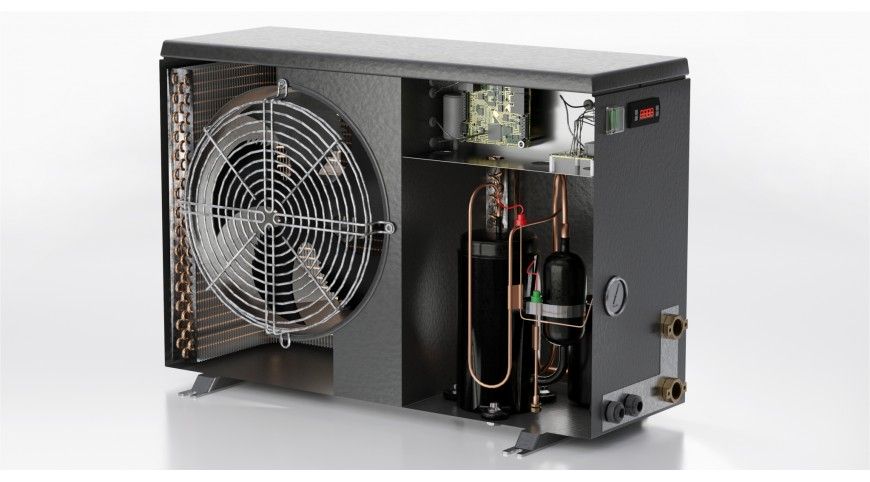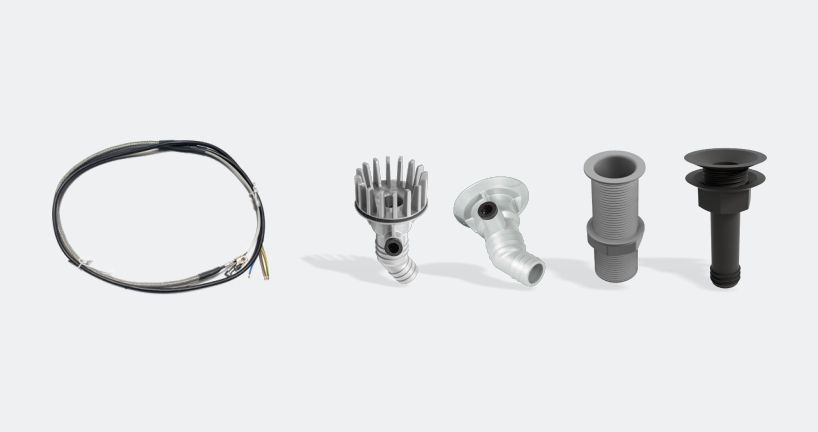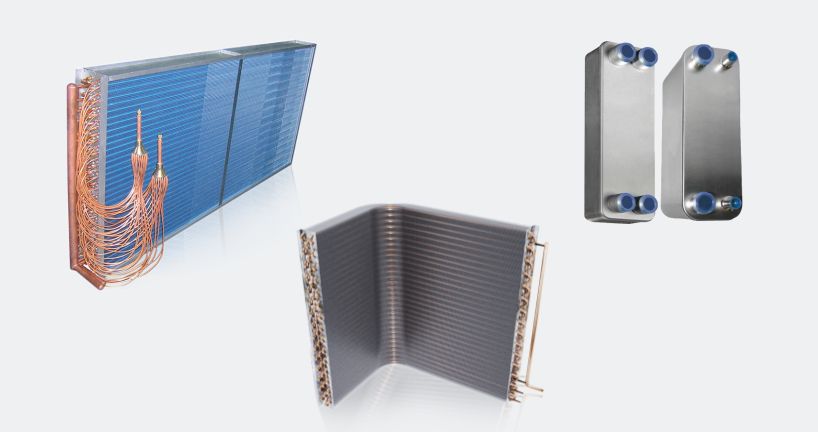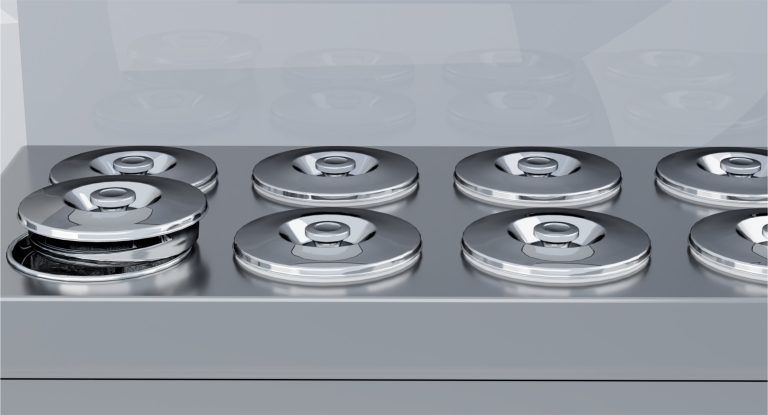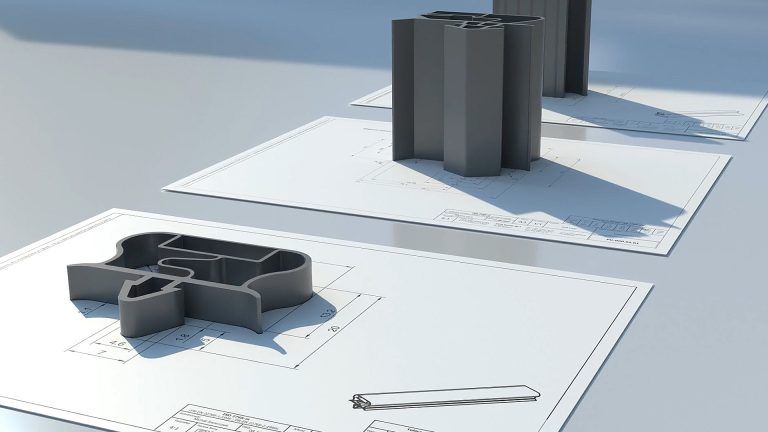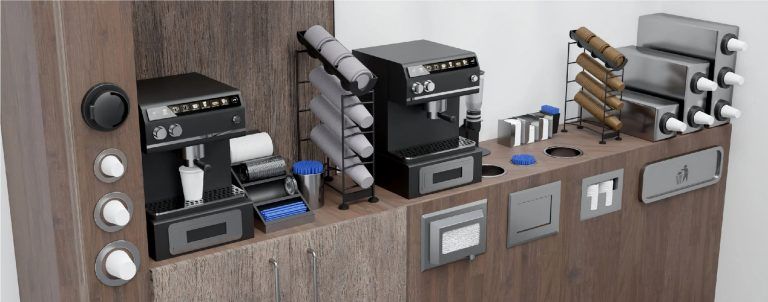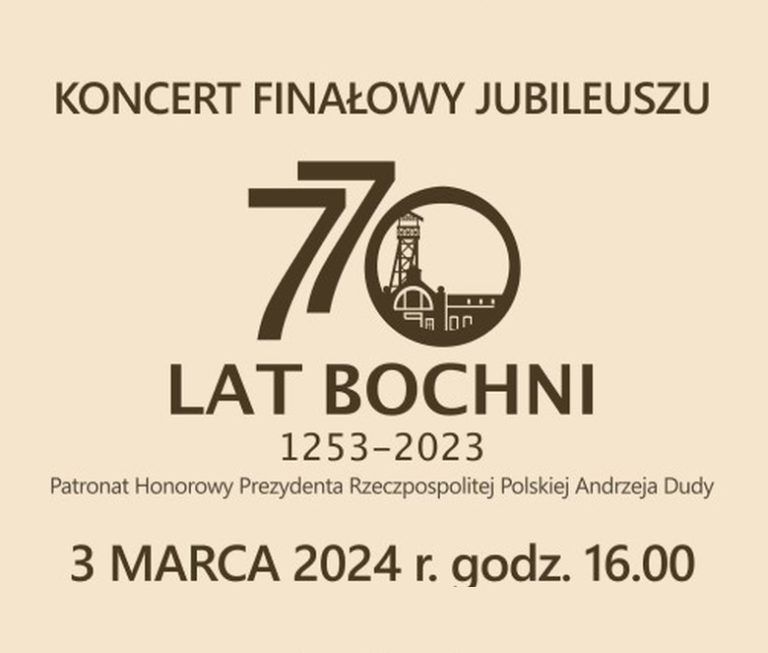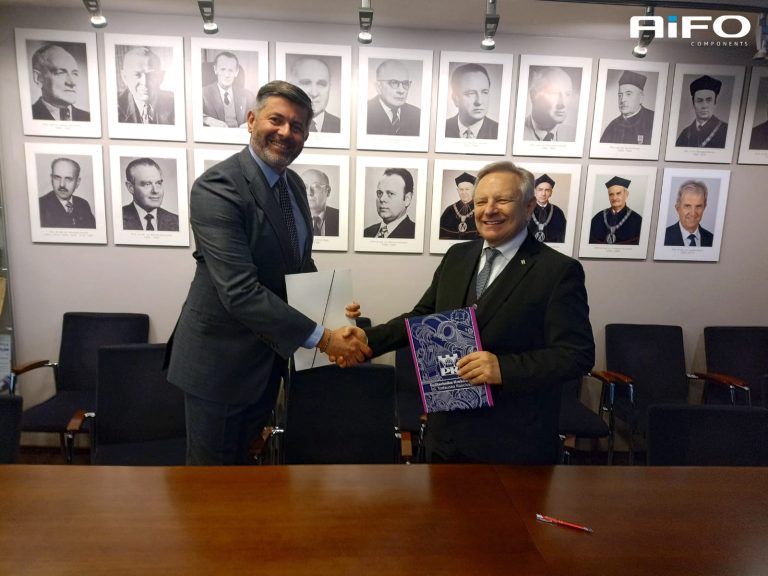Heat pump
Heat pumps are high-tech devices that allow both heating and cooling of a building. The high efficiency of the heat pump contributes to a significant reduction in the amount of greenhouse gases emitted into the atmosphere, as the pumps operate without combustion processes, producing no harmful exhaust gases or soot particles.
Types of heat pumps
We can divide heat pumps by heat source:
Ground
in this case, the heat pump extracts energy from the ground. This is the most stable solution, since the ground temperature is stable and its fluctuations are minimal. However, a ground source heat pump is expensive to install and requires drilling, which cannot be done in every case. For standard heat pumps, which require a borehole of 30 to 100 meters, a geological work project is required. If the project threatens the environment and does not meet legal requirements, it can be blocked. In practice, in protected areas, this type of heat pump is replaced by others, such as air-to-water heat pumps.
Air
A popular solution when it comes to heat pumps. Installation is relatively simple, as this type of heat pump draws energy directly from the air. The air-to-air heat pump does not require specialized installation, as in the case of the ground version. This type of heat pump is very popular nowadays, because it allows the heat pump to be used directly for hot water production. Air-to-water pumps are some of the most popular models. They are ideal for central heating systems and cooperation with underfloor heating. The air-to-water heat pump is a source of low-temperature heat that is ideally suited for this type of building heating.
Water
Are heating solutions that are being implemented alongside their ground-source and air-source counterparts. This type of heat pump installation system can have high efficiency all year round, but its installation is quite complicated and expensive. Water heat pumps work by using existing water reservoirs around the plot or through two dug wells – an intake and a discharge well. The pump draws water from the first well, recovers heat and transfers it to the building. Then discharges the cooled water to the second well. The unit must be equipped with control systems that will cause it to shut down in an emergency if water arrives at a temperature lower than allowed.
Conclusion
Heat extracted from the ground, air, water – this is one of the more ecological solutions. Total value of heat energy extracted from the environment is about 75% of the total energy. A major advantage is also that heat pumps can be used as the only source of heat for heating buildings. High efficiency of the devices makes them ideal for heating purposes in winter, and for cooling rooms in summer. This is made possible by a refrigerant that circulates inside the pump in a refrigeration system and absorbs heat from the environment. Popular addition to the pumps is photovoltaics. Since heat pumps together with a photovoltaic system form a complete and ecological solution.
Installation of an air-water heat pump
Installation of the heat pump depends on the model of the pump in question and the heat source. Monoblock heat pump is mounted outside the building and the central heating system is directly connected to it. Split type heat pump has an outdoor unit and an indoor unit. They are connected to each other by pipes through which the refrigerant flows.
Heat pumps also require different heating system solutions using, for example, underfloor heating. The use of fan coils, which can be used in the summer to cool the building.
What to keep in mind when installing a heat pump?
The installation of a heat pump must be carefully planned. Especially, the required distances must be maintained for the heat pump to operate efficiently and safely. Therefore, when installing a heat pump, it is advisable to enlist the help of experts and installers who know exactly how to install the various components.
It’s also important to remember that the heat pump must not make too much noise and disturb our neighbors. It must be at a certain distance from the plot boundary and building walls.
Where are heat pumps used?
Heat pumps are commonly installed during the construction of new homes. They are an excellent substitute for other solutions. For example, replacing the operation of gas boilers, the need to build a chimney, purchase fuel and design other complicated solutions. The principle of the heat pump is simple, and the efficiency is high. Thus, the device is ideal for heating the house and will work perfectly as the only source of heat. Of course, if the heat pump is correctly selected according to the area of house, the thickness of insulation, the number of household members and the climate.
Heat pump is also a good solution for retrofitted buildings. If the building has good insulation then there is no need for major changes. Solution itself is simple to implement, as the high efficiency of the heat pump. It will ensure the thermal comfort of the user, without the need for specialized projects.
With a heat pump we can also heat and cool not only residential buildings, but also public or industrial buildings. The use of several high-powered heat pumps is able to provide heating and domestic hot water even to large facilities such as hotels, boarding houses, restaurants.
Why a heat pump?
Heat pump is a pro-environmental and future-oriented choice. This type of solution allows you to become heating independent of fossil heat sources. The function of heat pump, in addition to the heating function, can also be cooling of rooms in the summer. It is a solution that allows to replace air conditioners with its operation.
New standards and norms
The WT 2021 standard is an energy standard that sets requirements for newly constructed buildings, in terms of thermal conductivity of structural elements. These standards have been significantly reduced. The maximum value of the heat transfer coefficient [U] must be as low as possible. To achieve this, a building’s insulation must be either thick enough or made of better insulating materials with lower thermal conductivity.
In addition, new standards specifying annual consumption of non-renewable energy have also been lowered. The result is that inefficient solutions will have to be replaced by others – better ones. Heat pumps make it easy to comply with the required standard. They make greater use of renewable energy – heat from the ground, water or air, while using photovoltaics and providing comfort.
By using green solutions, we contribute to environmental protection. Year after year, environmental awareness is increasing to meet increasingly stringent standards. Many people are also choosing to invest more and more money in renewable energy. It’s worth choosing pro-environmental solutions today, not only for ourselves, but also for our planet.
Clean Air Program
When investing in the purchase of a heat pump, subsidies from the Clean Air Program are available. Owners of not only new homes, but also those living in these older buildings, can apply for a subsidy to replace another inefficient heat source with a heat pump and to improve thermal insulation. In addition, using the Clean Air Program, it’s possible to obtain a subsidy for the construction of a photovoltaic installation. The rules of the program are available, for example, on government websites.
How much does a heat pump cost?
The cost of a heat pump depends on the type of pump and its parameters. Heat pump manufacturers also use different quality components, which affect the price of the final product. The use of an air-water heat pump is now becoming the cheapest type of building heating. It’s due to the constantly rising prices of other energy sources, such as coal and gas.
Solutions for heat pump manufacturers
We invite to learn more about our range of refrigeration components that are used to build a heat pump.
We encourage all customers looking for components for building heat pumps to contact us individually. With many years of activity in the refrigeration industry, we have proven yet modern solutions. In addition, the great knowledge and know-how of our engineers and consultants translates into comprehensive service and advice. We constantly maintain adequate inventory, which allows customers to save time, cost of delivery and storage.
